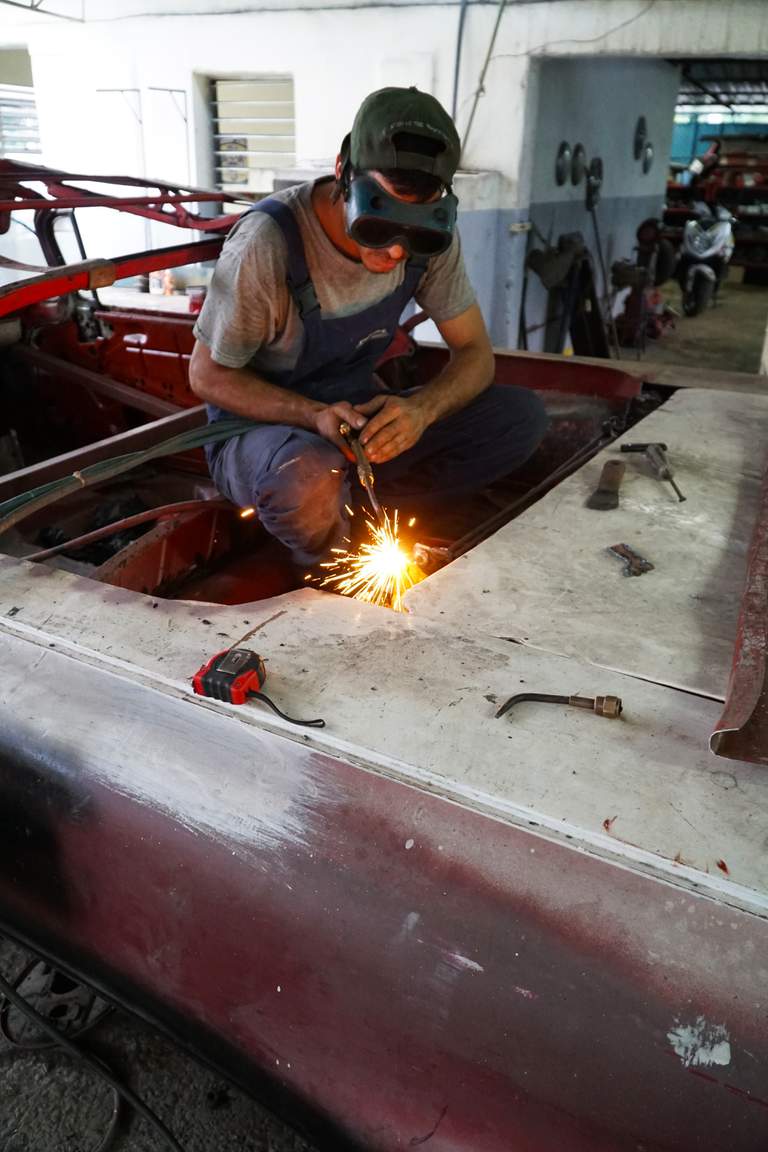
Classic cars sit parked alongside the Plaza Central in Havana, Cuba. Photo by Brian Canelles.
Keeping Cuba’s Classic Cars on the Road

A mechanic welds in a local Havana shop. Photo by Geoffrey Baer.
The classic American car is a Cuban icon and a relic of the country’s lavish, capitalist past. In Havana, tourists from around the world clamor for rides in ’57 Chevy Bel Air convertibles, many of which appear to have traveled through time, with perfect paint jobs and seemingly brand-new interiors.
There are several reasons for the number of vintage vehicles on Cuban streets. For one, the imposition of the U.S. embargo in 1962 made it impossible for Cubans to access new American cars. In addition, the Cuban government tightly restricted car imports and sales until recently. The only buyer in the country was the government, which for decades purchased its new fleets primarily from the Soviet Union, distributing them as a reward to select workers.
Vehicles obtained before the revolution, then, are precious commodities, and car repair and restoration have become a cottage industry. Cubans have found ingenious ways to work around a shortage of parts and materials and to keep their old classic cars on the streets. Broken curved windscreens have been replaced with heated and remolded glass from newer vehicles. Old Ford engines have been removed and replaced with diesel engines to save money on fuel. And interior fabrics have been recreated or substituted by meticulous upholsterers, many of them working on vintage sewing machines.
It has given rise to a breed of vehicles that, just like American jazz, Spanish flamenco, and so many other imports, have morphed into something uniquely Cuban.
In the video below, Geoffrey Baer visits a repair and restoration shop on a side street in Havana, and comes across a model that stirs up old memories.


